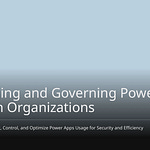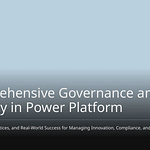Fragile deployments create big problems for teams. You often deal with issues like different environments, hidden links, and surprises on deployment day. These problems can hurt your confidence and slow down new ideas. Moving to reliable pipelines changes how you deliver projects. Azure DevOps is very important in this change by automating deployment tasks.
The benefits of using Azure DevOps are clear:
By using these practices, you can build a stronger and more reliable deployment process.
Key Takeaways
Using Azure DevOps for deployments keeps things the same everywhere. This cuts down on mistakes and surprises on deployment day.
Automation makes release cycles quicker. This helps teams give updates faster and react to user feedback better.
CI/CD pipelines in Azure DevOps make deployment easier. They help manage code and keep track of changes.
Using Infrastructure as Code (IaC) makes deployments standard. This means they can be done again and again in different places.
Monitoring and feedback are very important for getting better. They help teams learn from past deployments and improve future ones.
The Pain of Manual Deployments
Manual deployments can cause big problems that mess up your work. You might use zip files and spreadsheets to handle your deployments. But these ways have their own issues.
Issues with Zip Files and Spreadsheets
Using zip files can create many errors. For example, you could see the azureDeploy.DeployZipPackageErrorAxiosError. This means there was a problem uploading or deploying the ZIP package to Azure. Also, large ZIP packages can cause trouble. If the package is too big, you may need to remove extra files by changing your .gitignore or .deployment settings. You might also face authentication problems. This means you need to log in again to Azure by using az login in the Azure CLI.
Spreadsheets can help track changes, but they can hide important links that make deployments harder. These links are very important for how your application works. If they are missing or broken, your application might stop working. When the application depends too much on these links, it can slow down how quickly you can make changes, especially when new updates come out.
Hidden links can cause deployment problems because they are important for how the application works.
Missing or broken links can really hurt the application, possibly causing it to stop working.
If the application depends too much on these links, it can slow down how quickly you can make changes, especially during new updates.
Deployment Day: A Gamble
Deployment day can feel risky. You might hold your breath as you make changes to production, not knowing what could go wrong. For instance, a healthcare customer had problems because they manually deployed updates from development to production. This caused hours of extra work and possible bugs. In another case, sensitive data was leaked because the deployment process did not have a security check. This shows the need for better rules.
A healthcare customer had problems because they manually deployed updates from development to production, causing hours of extra work and possible bugs.
In a low-code/no-code setting, sensitive data was leaked because the deployment process did not have a security check, showing the need for better rules.
A flow took weeks to deploy without any security check, showing the risks of not having good security practices in low-code/no-code settings.
These examples show the dangers of manual deployments. The uncertainty can hurt your team’s confidence and slow down new ideas. Switching to automated processes can help reduce these risks and change deployment from a stressful event into a steady routine.
Why Automation Matters for Reliable Pipelines
Automation is very important for changing risky go-lives into regular tasks. When you use automated deployment pipelines, you can make your deployment methods the same every time. This helps create steady results in different environments. You won’t have to worry about surprises from manual deployments. Instead, you can concentrate on giving value to your users.
Here are some key benefits of automation:
Consistency: Automation makes sure the same deployment steps happen every time. This leads to reliable results and fewer bugs.
Reduced Human Error: By cutting down on manual work, you lower the chances of mistakes during deployments.
Speed of Release Cycles: Automated pipelines make the deployment process faster, allowing for quicker updates and feedback.
Enhanced Governance: Automation helps with compliance and oversight through organized deployment processes.
Finding errors early is another big benefit of automation. Testing workflows in a sandbox environment before they go live helps you spot and fix problems without affecting the real system. For example, sandbox testing in Power Automate gives a safe way to test changes. This proactive method helps catch errors early, making sure workflows work correctly when they go live.
The clear benefits of moving from manual to automated deployment pipelines in Power Platform projects are:
Automated deployment pipelines greatly reduce the effort and knowledge needed to get a return on investment from good application lifecycle management practices. This means you can set up these processes faster and better, leading to more reliable pipelines.
Setting Up CI/CD Pipelines in Azure DevOps
Making reliable pipelines in Azure DevOps is very important. It helps your Power Platform projects deploy smoothly. Here are some simple steps to set up your CI/CD pipeline:
Create a New Project in Azure DevOps: Sign in to Azure DevOps and start a new project that fits your needs.
Set Up Your Code Repository: Connect your current code repository to your Azure DevOps project to manage your code well.
Create a Build Pipeline: Go to the Pipelines section and make a new build pipeline to automate building your code.
Create a Release Pipeline: Set up a release pipeline to handle how your applications are deployed.
Configure Continuous Integration: Turn on continuous integration (CI) in your build pipeline settings. This will automate building whenever you make changes.
Add Testing and Quality Gates: Include testing tasks and set up quality gates to make sure only good code gets deployed.
Monitor and Debug: Use Azure DevOps tools to watch your pipelines and fix any problems that come up.
By following these steps, you can create a strong CI/CD pipeline that makes your deployments more reliable.
Best Practices for Continuous Delivery
To make your CI/CD pipelines work better, think about these best practices:
You can also improve your CI/CD process by using the Power Platform Tool Installer, adding solution versioning, and automating solution exports. The Power Platform Checker is a helpful tool for quality checks. It makes sure your applications meet the right standards before they are deployed.
Watching your pipelines is very important. You should define health states for your Azure DevOps pipelines, like:
Green (Healthy): All key needs are met, and resources are used well.
Yellow (Degraded): Some parts are alerting, but the system is still working.
Red (Unhealthy): Problems have lasted too long, or the system is down.
By following these best practices, you can build a continuous delivery process that is efficient, reliable, and can grow. This will lead to better results for your Power Platform projects.
Managing Code with Azure Repos
Azure Repos is very important for managing your code well. It gives you a strong platform for version control. This lets you track changes and work together easily with your team. By using Azure Repos, you can improve your Power Platform projects and make your development process smoother.
Version Control Strategies
Using good version control strategies is key for managing your Power Platform code. Here are some important strategies to think about:
Organizing Repositories: Set up a clear structure for your repositories based on projects or modules. This makes it easier to find things and understand what’s there.
Consistent Folder Structure: Keep a logical folder setup based on what each part does. This helps with maintenance and makes it easy to find files.
Collaboration Features: Use pull requests and code reviews to boost teamwork and improve code quality. These tools help communication and make sure all changes are checked before they are combined.
Automated CI/CD Pipelines: Use CI/CD to make building and deploying easier. This leads to faster feedback and reliable releases, letting you focus on new ideas.
Security Measures: Use built-in login and code checking tools to keep your code safe. These tools help find problems and keep your code strong.
To start, link your Power Platform solutions to Azure Repos for version control. You can easily commit and pull changes, enjoying real-time conflict resolution. The system keeps track of changes, showing a clear history of what users have modified.
Collaborating with Teams
Working together is very important for successful Power Platform projects. Azure Repos has many tools to help teamwork:
The Azure Repos app for Teams helps you watch repositories and manage notifications well.
Teams can connect the Azure Repos app to their repositories for easier collaboration.
Microsoft Power Platform Build Tools for Azure DevOps automate building and deployment tasks, improving team work.
By using these tools, you can make sure your team works well and reduces mistakes during development.
With Azure Repos, you can create a team-friendly environment that encourages new ideas and speeds up project delivery.
Automating the Release Process with DevOps
Using Azure DevOps to automate the release process makes your deployments much better. By using continuous deployment methods, you can make your workflows smoother and lower the risks that come with doing things by hand.
Continuous Deployment Techniques
To automate your release process well, think about these important methods:
To create a Power Platform unified package, add your version 1 task to Create Deployable Package. Check the box for Create Power Platform Unified Package. Choose the package platform and application versions used to build the solution, and give the path for where the deployable package will go.
If you need licenses, select Add Licenses to Deployable Packages for your version 1 task and pick Power Platform Unified Package from the drop-down menu. Provide the Model Name to add a license. Add a task for each model that needs a license.
After building the pipeline, find the published artifacts under Related in the Summary tab.
Make a release pipeline, choosing the build pipeline from the last section.
Add these tasks to stage 2: Power Platform Tool Installer, Power Platform WhoAmI, and Power Platform Deploy Package.
These methods help you create a more reliable and efficient automated deployment process.
Monitoring and Feedback Loops
Monitoring and feedback loops are very important for making your deployments better and more reliable. Here are some benefits of using these practices:
Continuous improvement through monitoring makes deployment quality better.
Frequent small deployments are easier to handle and fix problems.
A strong health model shows how the system is doing, allowing quick responses to alerts during rollouts.
Having blameless postmortems helps teams learn from deployment problems, creating a culture of improvement.
Using user feedback during User Acceptance Testing (UAT) makes sure the application meets user needs.
Also, code review feedback loops help find bugs and ensure coding standards are followed. User Acceptance Testing (UAT) gives insights into user experience, allowing for changes before full deployment. By adding these monitoring and feedback methods, you can build a stronger release pipeline that supports your Power Platform projects.
Implementing Infrastructure as Code (IaC)
Infrastructure as Code (IaC) is a big change for managing your Power Platform deployments. It helps you automate how you set up and manage your infrastructure. This makes your processes faster and more reliable. When you use IaC principles, your deployments will be the same and repeatable in different environments.
Overview of IaC Principles
Knowing the main ideas of IaC is important for doing it well. Here are some key points to think about:
Declarative vs. Imperative Paradigms: IaC is about saying what you want instead of how to get it. This is important for making sure things can be repeated in Power Platform automation.
Idempotency: This idea means that doing the same thing over and over gives you the same results. It is important for keeping automated processes reliable.
Version Control and Collaborative Development: Treating infrastructure like application code helps with teamwork and tracking changes. This makes it easier for teams to work together.
Modularity and Reusability: You can group parts into templates that can be used again. This helps keep things standard across your Power Platform environments.
Automation and Consistency: Getting rid of manual setups makes sure everything is the same in deployments. This uniformity is key for good automation.
Self-Documenting Infrastructure: Well-organized code gives clear information. This helps new team members learn and makes it easier for everyone to understand the infrastructure.
By using these ideas, you can make your deployment processes smoother and lower the risks that come with manual setups.
Tools for Automation in Azure
There are many tools that can help you use IaC well in Azure for your Power Platform projects. Here are some of the best options:
Terraform: This IaC tool uses a simple language to manage Azure resources. It makes deploying easier and works well with version control.
Azure Resource Manager (ARM) Templates: These JSON files help you manage Azure resources easily. They give a clear way to define your infrastructure.
Azure Bicep: A special language that makes it easier to write code for Azure resources. It is simpler than traditional ARM templates.
Pulumi: An open-source IaC tool that lets you manage Azure resources using common programming languages. This helps developers work in familiar ways.
Ansible: A tool that uses YAML for automation tasks. It is good for managing complex deployments.
Azure Automation: This service helps automate Azure management tasks, making operations easier and reducing manual work.
By using these tools, you can automate how resources are deployed, making everything more efficient and faster. This not only cuts down on setup time but also improves consistency and standardization in your deployments.
In conclusion, using Azure DevOps to automate your Power Platform delivery changes your deployment from a risky task into a steady routine. When you use automation, you can:
Lower management tasks and mistakes.
Spend time on important tasks that improve efficiency.
Use automation for the whole workload life cycle, from development to deployment.
Recent research shows that automation saves a lot of time and makes things more reliable. For instance, automating complicated workflows with Power Automate makes work easier by reducing manual tasks.
Adopt these practices to make your delivery process smoother and encourage new ideas in your team. Switching to automated pipelines not only increases productivity but also builds confidence in your deployment methods.
FAQ
What are the benefits of using Azure DevOps for Power Platform delivery?
Azure DevOps helps teams work together better. It makes deployment easier, cuts down on mistakes, and keeps things the same in production. This means faster releases and better quality.
How can I gather real user feedback during the deployment process?
You can get real user feedback by including users in User Acceptance Testing (UAT). This helps you learn what they need and make changes before the full launch.
What should I do if I encounter issues in production environments?
If you have problems in production, first check your monitoring tools for alerts. Then, look at logs to find the issue. Fix the problem and get feedback to avoid it happening again.
How does automation improve collaboration among team members?
Automation makes workflows smoother, so team members can focus on important tasks. It lowers manual mistakes and makes sure everyone follows the same steps, improving teamwork.
Why is it important to test rollback strategies?
Testing rollback strategies is important because it gets you ready for unexpected problems. A good rollback plan helps you go back to a stable version quickly, reducing downtime and keeping user trust.














